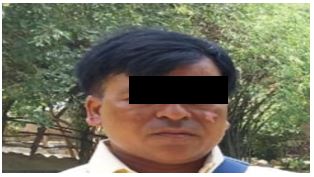Ayurvedic management of Shwitra (Vitiligo) with special reference to Twak Sharir - A Case Study
DOI:
https://doi.org/10.21760/jaims.8.11.32Keywords:
Ayurveda, Shwitra, Vitiligo, Shaman AushadiAbstract
Introduction: In Ayurveda, 'Twacha' or 'Charma' refers to the skin, and skin-related disorders fall under the broad category of 'Kushtha.' Among these conditions, 'Shwitra' stands out, marked by whitish discolorations on the skin. Shwitra's origins lie in the intricate interplay of seven essential bodily constituents, known as Sapta Dravyas: Vata, Pitta, Kapha, Rasa, Rakta, Mamsa, and Meda. Remarkably, Shwitra primarily manifests its enigmatic presence within the innermost stratum of the skin, known as 'Tamra.' This inner sanctum of the epidermis is held in high regard as the principal locus of Shwitra's affliction. It bears an intriguing resemblance to the more widely recognized condition known as Vitiligo, a dermatological anomaly characterized by hypopigmentation. This puzzling condition, Vitiligo, afflicts approximately 1% of the global population, adding a layer of complexity to our understanding of the intricate workings of the human integumentary system. Methodology: In this clinical case, a 43-year-old male presented with de-pigmented patches in the left buccal region, characterized by mild pruritus but the absence of any burning sensation. The therapeutic approach commenced with the administration of Shamana Aushadis, specifically targeted at symptom alleviation. The primary objective was to address the root pathology and facilitate the patient's overall recovery and well-being. Result: The patient responded well to Shamana Aushadis. Progress was assessed using subjective and objective criteria, employing a comprehensive approach to evaluate the treatment's effectiveness.
Downloads
References
Rietschel RL, Fowler JF Jr. Fisher's Contact Dermatitis. 5th ed. Philadelphia: Lippincott Williams & Wilkins; 2001. p. 571-577.
Shajil EM, Agarwal D, Vagadia K, Marfatia YS, Begum R. Vitiligo: Clinical profiles in Vadodara, Gujarat. Indian J Dermatol. 2006;51:100-104.
Kaviraj Ambikadatta Shastri. Sushruta Samhita, Ayurveda Tatva Sandeepika. In: Chowkhamba Sanskrit Sansthan Varanasi, editor. Reprint edition. Sushruta Samhita Shareerasthana. 2010;4(4).
P. Kashinath Shastri, Dr. Goraknath Chaturvedi. Charak Samhita, Vidyotini Hindi Commentary. In: Chowkhambha Sanskrit Sansthan Varanasi, editors. Charak Sharirsthana. 2007;4(5):867.
Pt. Hari Sadashiv Shastri, Sarvang Sundar, Hemadri commentary. Ashtang Hridayam with Arundatt Commentary. In: Ayurved Rasayan, editors. Reprinted Sharir Sthana. 2007;3(8):386.















